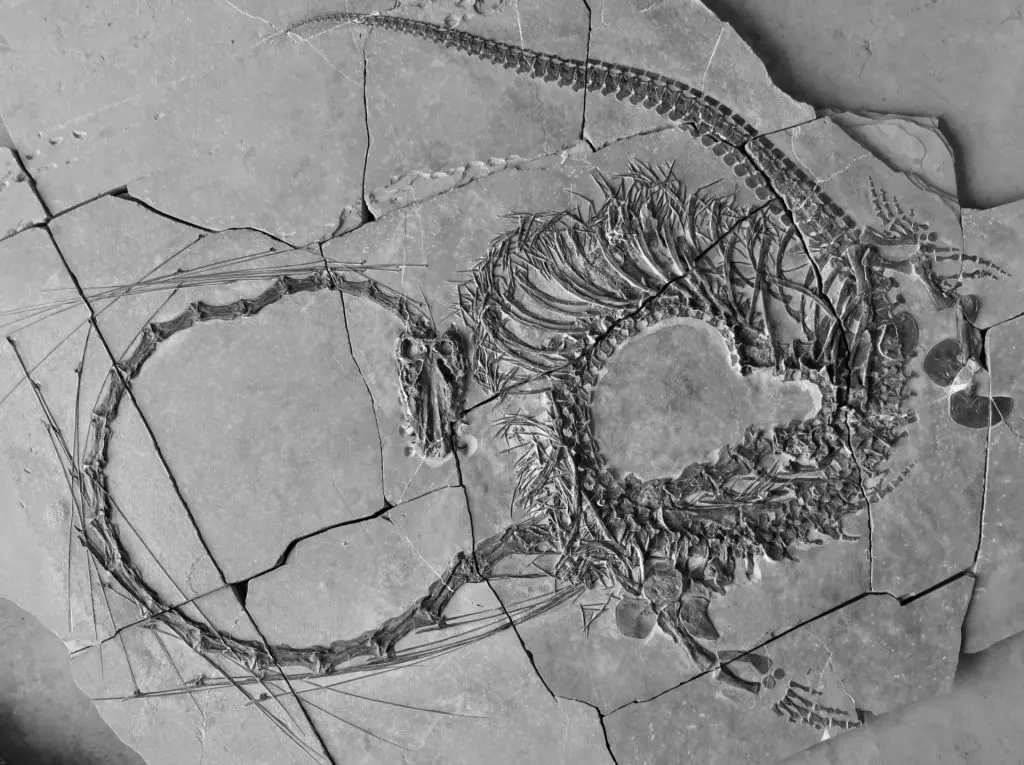New fossil discovered in ancient limestone deposits in southern China enabled us to make the extraordinary discovery that of some kind of dragon 240 million years ago.
News, relaunched by user BBCmagazine published first Earth and Environmental Science: Transactions of the Royal Society of Edinburgh, with an extensive description of a number of new fossils of this animal. Dinocephalosaurus orientalis, that is the scientific name of the species first identified in 2003, contained in the fossil is miraculously complete and allows scientists to observe the overall anatomy of this bizarre prehistoric animal for the first time. It got the name dragon because of its extremely long neck, despite being a 5-meter-long aquatic reptile from the Triassic period.
Nick Fraser of National Museums Scotland, who was part of the international team that studied the fossil, described it as “a very strange animal, with fin-like limbs, a super flexible neck longer than the body and tail combinedThe researcher hypothesized that the extreme flexibility of the prehistoric dragon’s neck was found in its 32 separate vertebrae, which may have given it a hunting advantage, allowing it to forage in underwater crevices.
Researchers from Scotland, Germany, America and China studied the fossil over a decade at the Beijing Institute of Vertebrate Paleontology and Paleoanthropology, part of the Chinese Academy of Sciences. “It was an international effort. Working with colleagues from the United States, United Kingdom and Europe, we used newly discovered specimens housed at the Chinese Academy of Sciences to build on our existing knowledge of this animal.
Among all the extraordinary finds we made in the Triassic in Guizhou Province, Dinocephalosaurus probably stands out as the most remarkable,” explained Professor Li Chun from the Institute of Vertebrate Paleontology and Paleoanthropology.As an early career researcher, it was an incredible experience to contribute to these important findings. We hope that our future research will help us understand more about the evolution of this group of animals, and in particular how the elongated neck worked” concluded Dr. Stephan Spiekman, postdoctoral researcher at the State Museum of Natural History in Stuttgart.

